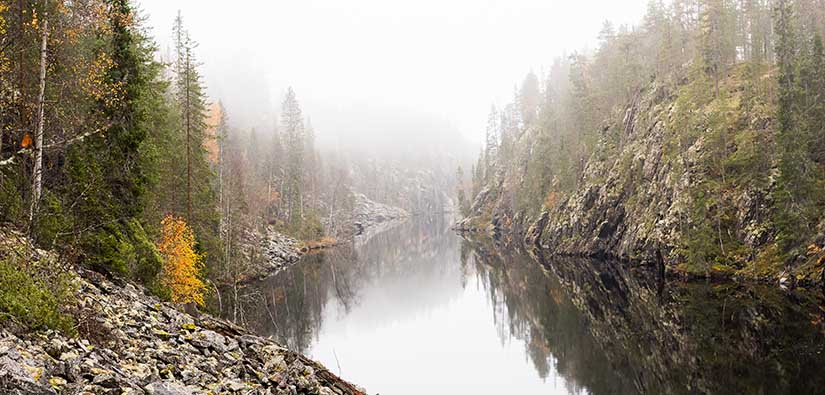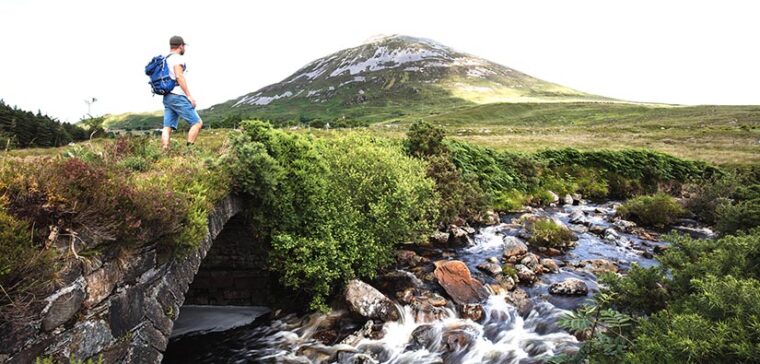ASCENT

Apply Skills and Conserve our Environment with New Tools
ASCENT was a three-year project, in which good practices of visitor management were shared between project partners. Growing use and lack of proper visitor management have resulted in degradation, littering and adverse habitat impacts at the project sites. This is why there is a desire to invest in management planning, visitor surveys and the implementation of new, sustainable path building methods.
The project included partners from Finland, Norway, Iceland, Ireland and Northern Ireland.
ASCENT ended on August 31st 2019. All goals were achieved, but on top of them, an important achievement was the creation of new contacts, something on which the whole partnership agreed. Working together generated non-replaceable added value. Project partners visited each other’s sites, tried and learned new methods in path building, discussed solutions to challenges and got inspired to try new techniques on their sites.
- The outcome of the project can be explored in the Conference Report published at the final seminar in Ireland in June 2019: https://www.ascent-project.eu/wp-content/uploads/2019/07/ASCENT-to-Summit-Conference-Report-2019.pdf
- The project has been introduced in a nutshell on the project video: https://www.youtube.com/watch?v=ZS-R_CEKRS0&feature=youtu.be
The project partner in Finland was Metsähallitus, Parks & Wildlife Finland, Ostrobothnia Region.
ASCENT Project Objectives and Activities

The objective of the project was to promote the sustainable use of the sites through international exchange of know-how and learning. Visitor surveys were conducted at the sites and management plans drafted. Building methods and good practices were taught on-site in each project country. Another objective was to collect these practices and create an opportunity to put the project results to use elsewhere at a later time. Strengthening local ownership improves visitor awareness of sustainable nature tourism, with the aim being to reduce the adverse impacts brought about by use of the site.
The project focused its efforts on a total of seven sites. The Finnish site is the Hossa National Park, whose grand opening was held in June of 2017. The site in Ireland was Mount Errigal and in Norway, Trolltunga. Iceland and Northern Ireland had two sites each: Úlfarsfell and the Eldhraun lava field in Iceland and the Slieve Donard and Slieve Gullion mountains in Northern Ireland.
The sites’ elevation ranges from 850 metres above sea level (Slieve Donard) to an average of less than one hundred metres (Iceland’s lava field and Hossa’s forested hills). Activities and how the use of these sites is divided between seasons, as well as services provided, vary. Visitor numbers and profiles also vary, and there is no reliable visitor data from all of the sites. However, one thing the sites do have in common is their need for better planning and visitor management, so that wear-and-tear, littering and erosion can be brought to an acceptable level.
Hossa National Park
Finland’s ASCENT site Hossa became a National Park in June 2017. Hossa’s popularity has gone through the roof after it was designated; visitor numbers have doubled and were now around 120 000 visitors on the opening year.
In recent years, major construction and restoration measures have been taken at the Hossa National Park, but this kind of improvement and maintenance work is a continuous effort. The best of the methods learned during the project can be used to support the sustainable use of Hossa in the challenging situation where visitor numbers are set to rise due to the founding of the new national park. A management plan has been drafted for the new national park and a code of conduct devised to instruct and guide visitors to the region.
Management plans are made to help to develop areas in a sustainable way. They guide the actions of Metsähallitus, Parks & Wildlife Finland as the manager of national parks and other protected areas. The management plan for Hossa National Park is based on the Nature Conservation Act and on the specific Act designating the National Park. The management plan brings together different forms of land use. Visitors come to Hossa to enjoy hiking, winter activities, fishing and hunting but also canoeing and diving. All activities have to be managed in a sustainable way, without causing damage to the environment and the delicate nature of the National Park. This management plan will cover the next 15 years.
Stakeholders, local people, NGO’s etc. were engaged closely during the process. Several events were organized during the process to make sure all parties involved had had the opportunity to have their say in the development and use of Hossa National Park. Hossa’s management plan was finalized during winter 2018–2019. Amendments based on comments from the public, authorities and other stakeholders have been included in the plan. The management plan was ratified by the Ministry of the Environment in July 2019.
- English summary (pdf file) gives an overview on the contents of the management plan.
- Hossa National Park homepage (www.nationalparks.fi/hossa)
Project Partners and Funding
The lead partner was the Donegal County Council from Ireland. Other partners were Hordaland County Council from Norway, the Soil Conservation Service of Iceland, the Newry, Mourne and Down District Council from Northern Ireland and Metsähallitus, Parks & Wildlife Finland. Other parties included Údarás na Gaeltachta from Ireland, the municipalities of Mosfellsbaer and Skaftárhreppur in Iceland and the Mourne Heritage Trust and Causeway Coast & Glens Heritage Trust in Northern Ireland.
The project received funding from the Northern Periphery and Arctic programme; match funding was provided by the Ministry of Economic Affairs and Employment. The project ran from September 2016 to August 2019 and received funding totalling approximately 1,660,000€. The share of Metsähallitus Parks & Wildlife Finland was 205,000 €.





Project Facebook pages @AscentProjectNPA

Last updated 5 January 2022
